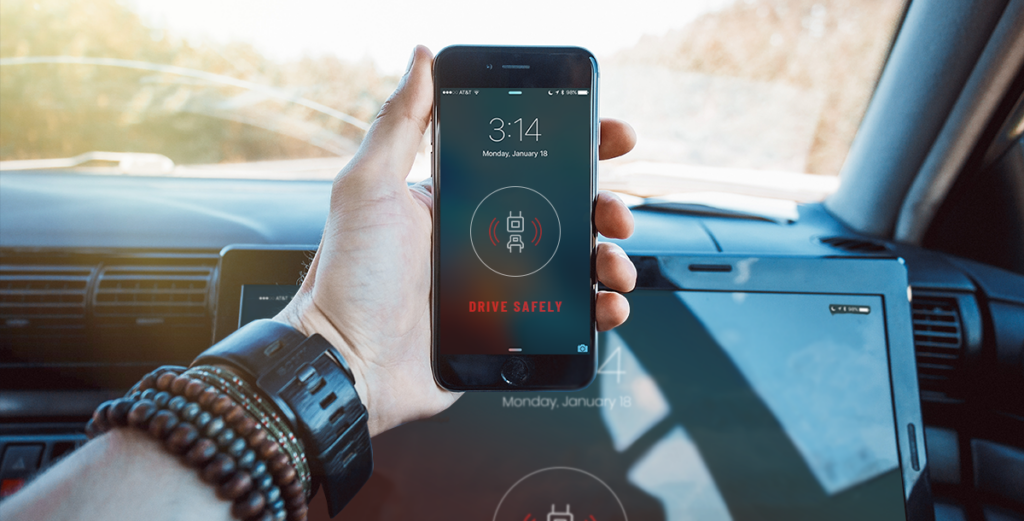Table of Contents
We’re standing on the edge of the new world. The world of autonomous cars. Self-driving cars are already the fact, not the future. But while we’re anticipating this new world, the question of safety on the roads remains as important as ever before.
McKinsey & Company sited that autonomous vehicles could prevent 90% of all traffic accidents in the U.S., and save up to $190 billion in damages and health-costs annually. Most of the accidents that autonomous vehicles are supposed to eliminate occur due to human errors, such as aggressive driving, distraction, health problems.
Surprisingly, 30% of accidents due to distraction and aggressive driving can be already prevented by such simple thing as smartphone, or rather a Safety Driving App inside of it.
Safety Driving App Categories
Let’s face the truth, Google had begun the self-driving car project in 2009 and still hasn’t presented consumer-oriented products. Uber and Tesla are lagging behind. Moreover, the dream of self-driving cars is, well… underestimated.
By now, the average age of vehicles in the U.S. is around 11.6 years. Congrats, good for you, if you bought a new Toyota with collision prevention system, but how about your neighbor?
Distracted Driving Protection
The first bunch of features covers “distraction” problem. The functionality of such an app is aimed to protect the driver from his/her own smartphone. Such app will minimize the number of times you switch attention to your phone and will make sure you keep your eyes on the road.
Features of the safe driving app:
- Automatic switch to Do Not Disturb mode while driving.
- Block calls while driving.
- Block texting while driving.
- Parent control mode that disables all social media apps while driving.
- Report to another device if user violates speed limit, curfew, unlocking phone, etc.
Safe Driving Apps for iPhone
Unfortunately, not all of this function will work on iOS, due to the strict security policy of Apple devices, which prohibits app from interfering basic smartphone activities, like calls, screen lock, messages, etc.
- Mute mode.
- Read aloud mode.
- Autoresponder for calls and push-notification.
- Auto reply with an “I’m driving now” message while driving.
These are features that can be activated on iOS devices. The broader list of function can be included in iOS app too, but those should be activated by the user itself, which is not suitable for parental control apps.
Improvement of Driving Habits
Preventive measures and education are always better than coping with consequences of bad driving habits. There is a big category of apps, that can make person a better driver.
The app simply monitors user’s risky behaviors on the road:
- Driving beyond speed limits
- A Number of hard braking.
- A Number of sharp turns.
- A Number of times a person has used phone while driving.
- Aggressive driving score calculated by the amount of time in the yellow speed zone.
After each trip, this data is recalculated to a driving score with hints, how user can improve it. Simply as that you can gradually become better on the road.
Driver Alert App
The most promising kind of app, that will use hardware smartphones already has in order to detect and prevent the dangerous driving behavior.
Driving while being tired or distracted is very dangerous. In response to this auto industry is developing new driver safety technology for their top end cars. Volvo late SUV uses steering wheel movements and lane markers on the road to determine if the driver is drowsy or not.
But only a tiny percentage of cars on the road have these driver alert systems. And it will take a decade for this new tech to be commonplace in most cars across the globe. If you can’t afford such car, how about an app?
Think about the app that will use simple vision and machine learning algorithms to detect dangerous driving behavior. Such apps and they are already under development, can use hardware every smartphone has: dual-cameras on smartphone.
- The front camera tracks the driver’s head pose and direction as well as eyes and blinking rate as a means to infer drowsiness and distraction. Specifically, app uses blink detection algorithms to detect periods of micro-sleep, fatigue, and drowsiness. If it detects this it alerts the driver by displaying an alert icon on the phone’s screen, along with the audible alert.
- The back camera, at the same time, monitors the distance between cars to determine if the driver is too close to the car in front as well as tracking lane change conditions. If it detects that the driver is too close to the car in front a color status bar on the touch screen changes from green to red along with an audible alert.
Unfortunately, today’s smartphones aren’t designed to process simultaneously streams from both cameras at the same time. To address this problem developers make a schedule of image processing, that indicates when to switch cameras.
On top of this technology, such app can merge information from both cameras and other embedded sensors on the phone – such as GPS, accelerometer, and gyroscope – to detects and alert the driver about dangerous conditions in and outside of the car.
Bottom Line
Let’s face it, driving without an app is like driving without a map used to be. Nowadays, smartphones are part of the behind the wheel experience. But what are the apps you really need? Maybe now is the time to create an app that will sort this out for you.

